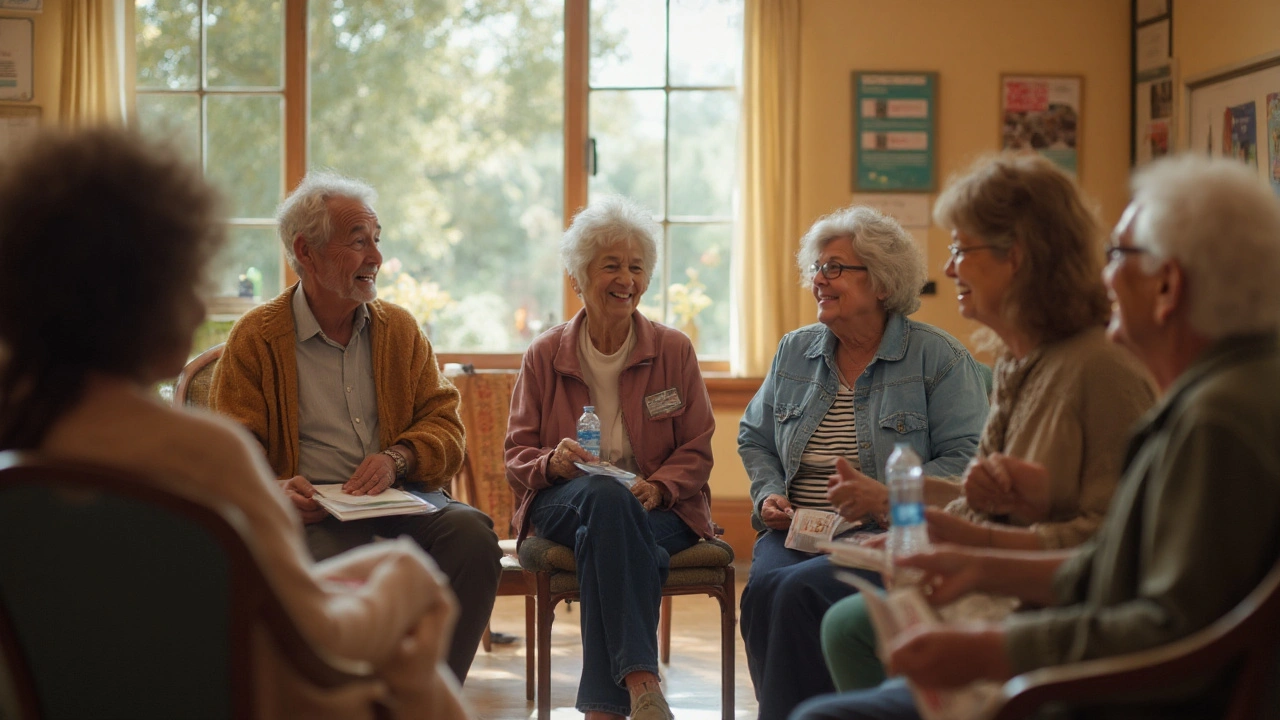
If you plan your day around bathrooms, you’re not being dramatic-you’re managing a real, common condition. Overactive bladder (OAB) affects roughly 1 in 6 adults, and yes, it can run your life if you let it. Tolterodine helps many people, but pills alone aren’t the whole fix. The goal here is simple: find support you can trust, make tolterodine work for you, and build doable habits so urgency doesn’t call every shot.
- TL;DR: You need trustworthy info, a reachable care team, and day-to-day strategies. Medication is one piece, not the whole puzzle.
- Use a bladder diary for 3-7 days to guide your plan; bring it to your appointments.
- Side effects like dry mouth and constipation are common with tolterodine; simple swaps (gum, more water with fiber, stool softeners) often help.
- Pelvic floor physical therapy, bladder training, and small diet tweaks can cut trips to the bathroom in weeks.
- Know your “when to pivot” signs: no change after 6-8 weeks, rough side effects, or red flags like painful urination or blood in urine.
- Real-world help exists: patient groups, PT directories, discount cards, workplace accommodations, and discreet products.
Find trustworthy info and a care team you can reach
First job: get facts you can rely on and people you can actually reach when things get weird at 9 p.m. Not all “tips” online are helpful. You want guidance that matches current standards and your life, not someone else’s.
What counts as solid? Look for resources that align with recent guidelines and unbiased reviews:
- Guidelines: American Urological Association/SUFU (updated 2024) and NICE (UK) cover step-by-step OAB care, from diaries and pelvic floor training to second- and third-line therapies.
- Evidence reviews: Cochrane Reviews compare meds like tolterodine with others (including newer beta‑3 agonists) using real outcomes like fewer urgency episodes and fewer leaks.
- Regulatory info: The FDA-approved label for tolterodine explains dosing, interactions, and safety warnings in plain terms.
Where to find real people support:
- Patient advocacy: National Association for Continence, Urology Care Foundation, and International Continence Society have practical patient pages, printables, and webinars.
- Pelvic floor PT: Use professional directories (for example, national physical therapy associations or recognized pelvic health networks) to find a certified pelvic health therapist near you.
- Community: Look for moderated forums or support groups hosted by hospitals or national continence organizations. Peer tips are gold when they’re grounded in evidence.
What a good care team looks like:
- Primary care to coordinate refills, labs, and referrals.
- Urology or urogynecology for workups, med changes, and procedures (Botox, nerve stimulation) if needed.
- Pelvic floor physical therapist for tailored exercises and urge control skills.
- Pharmacist for drug interactions, side-effect triage, and cost hacks.
Reality check: you’re not chasing “perfect bladder days.” You’re chasing fewer emergencies, better sleep, and the confidence to sit through a meeting without clock-watching. That’s success.
| What to know | Typical numbers | Source type |
|---|---|---|
| Adults living with OAB symptoms | ~12-16% of adults | Population studies cited by AUA/SUFU (2024) |
| Tolterodine benefit | ~1 fewer urgency episode/day vs placebo by 4-8 weeks | Cochrane reviews of antimuscarinics |
| Dry mouth with tolterodine ER | ~20-25% | FDA label, pooled trials |
| Constipation with tolterodine ER | ~5-7% | FDA label, pooled trials |
| Time to reassess treatment | 6-8 weeks after starting or changing dose | AUA/SUFU guideline |
| Pelvic floor PT impact | Meaningful symptom improvements in 6-12 weeks | NICE/AUA summaries of RCTs |
Use the numbers as guide rails, not promises. If you’re outside these ranges, it’s a nudge to adjust the plan-not a failure.
Make tolterodine safer, cheaper, and more effective
Tolterodine is an antimuscarinic. It calms bladder muscle overactivity but can also dry you out and slow your gut. The trick is getting the benefit without trading one problem for another.
Common ways to take it (confirm your exact prescription):
- Immediate-release: 2 mg twice daily (sometimes 1 mg twice daily for sensitivity or interactions).
- Extended-release: 4 mg once daily (2 mg daily if needed). Many people find ER gentler on side effects.
Timing tips:
- Pick a time you never miss, like with breakfast. Extended-release usually works best taken the same time every day.
- Give it 4-8 weeks before judging it. Keep a bladder diary at baseline and at weeks 2, 4, and 8 to see actual change.
Side effects and fixes:
- Dry mouth: sugar-free gum or lozenges, xylitol mints, a bedside water bottle, alcohol-free mouthwash. If it’s awful, ask about ER version or dose change.
- Constipation: daily fiber (food first), more water, gentle movement. If needed, a stool softener (docusate) or osmotic laxative (polyethylene glycol) per label.
- Blurred vision or dizziness: stand up slowly; avoid driving until you know how you react.
- Can’t pee or painful urination: that’s a stop sign-call your clinician same day.
Safety guardrails (based on FDA label and guidelines):
- Tell your clinician if you have uncontrolled narrow-angle glaucoma, gastric retention, severe constipation, or urinary retention-antimuscarinics can make these worse.
- Older adults: anticholinergic burden can affect thinking and fall risk. Ask about the lowest effective dose, ER versions, or switching drug classes.
- Men with large prostates: higher risk of retention; you may need a flow test or ultrasound first.
- Interactions: Tolterodine is metabolized by CYP2D6 and CYP3A4. Strong inhibitors (for example, certain antifungals or macrolide antibiotics; some antidepressants like paroxetine/fluoxetine) may require dose changes. Your pharmacist can run a check in 2 minutes.
- Heart rhythm: Rarely, tolterodine can lengthen QT. If you have a known long QT or take other QT‑prolonging meds, ask if you need an EKG first.
- Pregnancy and breastfeeding: Discuss risks vs benefits; data are limited. Non‑drug measures often come first.
Make it affordable:
- Ask for generics and a 90‑day supply-often cheaper per dose.
- Compare pharmacy prices with reputable discount programs; prices in 2025 can range widely by zip code.
- If ER is pricey, ask whether IR split dosing is acceptable for you, or consider alternative meds your plan covers better.
- Look into patient assistance or manufacturer savings for brand versions if that’s your only covered option.
How to know it’s working:
- You can delay a bathroom trip by a few minutes (then longer) without panic.
- Nighttime trips shrink by 1-2 times.
- Leaks are fewer and smaller; you switch to thinner pads or need fewer per day.
- Your diary shows fewer urgency episodes and a bit more time between voids.
Simple rule of thumb: if you see no change by week 6, or side effects are a deal‑breaker, set up a medication review. Don’t tough it out for months.

Daily strategies that calm urgency and leaks
Medication reduces the volume on your bladder. Habits control the channel. Pairing both is how most people get their lives back.
Start with a bladder diary (3-7 days):
- Write down times you pee, leak, fluids you drink (type, amount, time), urgency level (0-3), and activities when leaks happen.
- Look for patterns: Are mornings calmer? Does coffee or diet soda set you off? Is the last hour before bed the worst?
- Bring your diary to your appointment. It turns a vague “I go a lot” into a plan with numbers.
Bladder training (gradual):
- Pick your starting interval-say you usually pee every 45 minutes. Try to wait 5 extra minutes for a few days. Then add another 5-10 minutes.
- Use urge suppression: pause, do 5 quick pelvic squeezes, breathe down into your belly, think “urge is a wave; it passes.”
- Set reminders at the new interval. This is training, not punishment.
Pelvic floor physical therapy:
- This isn’t just Kegels. A pelvic PT checks how you breathe, stand, and move; tight or weak muscles can both cause urgency and leaks.
- You’ll learn the “quick flick”-rapid squeezes to quiet the bladder when an urge hits-and how to relax the pelvic floor during voiding.
- Expect noticeable changes in 6-12 weeks if you practice a few minutes daily.
Smart fluid and food rules (keep it flexible):
- Hydration sweet spot: pale yellow urine. Constantly sipping can keep your bladder noisy; try drinking more in the morning, less after dinner.
- Common triggers: caffeine, alcohol, artificial sweeteners, carbonated drinks, citrus, tomato, hot spices. Test one change at a time so you know what matters for you.
- Night plan: finish most fluids by 2-3 hours before bed. Empty your bladder once right before lights out.
Three mini routines people actually use:
- 3-2-1 for nights: stop caffeine by 3 p.m., last full glass of water 2 hours before bed, no screens 1 hour before to help sleep (better sleep lowers nighttime urgency).
- Freeze, squeeze, breathe: when an urge hits, plant your feet, do 5-10 quick pelvic squeezes, exhale slowly. Then walk, don’t run, to the bathroom.
- Trigger swap: if coffee sparks urgency, try half‑caf or switch one cup to hot herbal tea you enjoy. Keep the ritual; change the trigger.
Apps and tools worth having:
- Bladder diary app or a simple note template in your phone.
- Medication reminders that factor in time zones if you travel.
- Discreet pads or absorbent underwear for days you’re training delay intervals. Think of them as safety gear, not a forever thing.
Measuring progress without obsessing:
- Pick two numbers that matter (for example, trips per day and leaks per week). Track those only.
- Celebrate the boring wins: “I sat through a movie.” Those moments are the whole point.
Products, rights, and real-world support
Living well with OAB is half logistics. Set up your environment so your bladder isn’t the boss.
Products that help:
- Absorbent options: thin liners for small leaks, moderate pads for longer meetings, protective underwear for travel days. Try sample packs to find your fit and cut bulk.
- Skin care: a gentle, pH‑balanced cleanser and a barrier cream prevent irritation if you leak.
- Bed and seat covers: washable waterproof pads save laundry and give peace of mind.
- Travel kit: spare underwear, a couple of pads, wipes, a folded bag for wet items, and a small water bottle for timed sips.
Work and school rights (U.S. example):
- Reasonable accommodations under the ADA can include flexible bathroom breaks, a desk nearer to restrooms, or permission to keep water at your station.
- Ask your clinician for a brief note stating you need unrestricted restroom access for a chronic bladder condition.
- If you travel for work, ask for aisle seats and meeting agendas with built-in breaks.
Insurance and cost tips:
- Call your plan’s pharmacy line: ask which OAB meds are preferred and what criteria apply (prior auth, step therapy). Bring that info to your next visit.
- Ask about coverage for pelvic floor PT and continence supplies. Many plans cover PT with a referral.
- If you use discount cards, show both your insurance and the discount price at the pharmacy; pick the lower total for that fill.
Social support without awkwardness:
- Talk to one trusted person at home first. Try: “I’m working on a medical plan that has me retraining my bladder. I might need to pause before I run to the bathroom-cheer me on.”
- Date nights and gatherings: choose venues with easy restroom access and order your safest drink first. Build wins early in the evening.
- Support groups: look for ones moderated by clinicians or national continence groups. Bring questions like “What helped you with dry mouth on tolterodine?” and “Which travel tips actually stick?”
Mental health matters here. Anxiety amps urgency. A few sessions of CBT or a short mindfulness practice can make a visible difference in bathroom frequency. You’re not imagining that connection-stress hormones ramp up bladder sensitivity.

When to pivot: red flags, options, Mini‑FAQ, and next steps
Sometimes the plan you start with isn’t the plan you stay on. That’s normal. The win is knowing when to switch.
Red flags that need same‑day advice:
- Fever, back pain, or burning with urination (possible infection).
- Blood in urine you can see.
- New trouble starting your stream, bloating, or lower belly pain (possible retention).
- Severe constipation not improving with usual measures.
If tolterodine isn’t cutting it by week 6-8, or side effects are rough, here’s the typical decision path (from AUA/NICE guidance and trial data):
- Check basics: are you taking it daily? Are triggers (like afternoon energy drinks) sabotaging it? Any drug interactions?
- Adjust dose or switch formulation (IR to ER, or lower dose if side effects dominate).
- Switch class: beta‑3 agonists (mirabegron or vibegron) often have less dry mouth and can pair with pelvic PT.
- Combination therapy: antimuscarinic + beta‑3 agonist is guideline‑supported when single therapy only partly works.
- Third‑line options for tough cases: bladder Botox injections, tibial nerve stimulation, or sacral neuromodulation. These are outpatient‑type procedures after a full talk about pros and cons.
Mini‑FAQ
How long does tolterodine take to work?
You may notice calmer urges in 1-2 weeks, but the fair trial is 4-8 weeks with a diary. Reassess at week 6 to decide next steps.
Can I drink coffee?
Many people can handle 1 small cup in the morning. If coffee spikes urgency, try half‑caf or switch one cup to a non‑caffeinated option. Test and track-don’t guess.
Is there a “best” time to take tolterodine?
Pick a consistent time you won’t miss. For extended‑release, morning with breakfast is common, but consistency beats the clock.
Can I combine tolterodine with mirabegron or vibegron?
Yes, combination therapy is used when one drug alone underdelivers. Your clinician will check blood pressure and interactions first.
Will pelvic floor training help if I’m already on medication?
Yes. Trials show behavior + meds beats either alone for many people. PT also teaches urge control you can use forever.
Are anticholinergics linked to memory problems?
Large studies associate long‑term, high total anticholinergic use with cognitive issues in older adults. Discuss duration, dose, and alternatives. Lowering total anticholinergic load matters.
What if I have both OAB and stress leaks (with cough/laugh)?
That’s mixed incontinence. Pelvic PT is first‑line. Meds help urgency; PT, devices, or procedures may help the stress piece.
Can diet alone fix OAB?
Diet can calm triggers, but complete control from diet alone is uncommon. Pair it with training and, if needed, medication.
Troubleshooting by situation
- New to tolterodine: start a diary, set a 6‑week check‑in, prep dry mouth/constipation fixes now so you don’t quit on week 2.
- Older adult or caregiver: ask for the lowest effective dose, consider ER, check all meds for anticholinergic load, and add fall‑prevention basics.
- Men with prostate symptoms: screen for retention risk before and after starting; if slow stream or incomplete emptying gets worse, call.
- Glaucoma history: confirm type with your eye doctor; uncontrolled narrow‑angle glaucoma is a no‑go for antimuscarinics.
- On many meds: ask a pharmacist to run a full interaction and anticholinergic burden review; bring the printout to your appointment.
Quick checklists
- Appointment prep: 3-7 day bladder diary, list of meds/supplements, top 3 goals (for example, fewer night trips, make it through class).
- Everyday kit: spare pad/underwear, wipes, small water bottle, sugar‑free gum, travel‑size barrier cream.
- Home tweaks: clear path to the bathroom, night light, waterproof mattress pad, a chair near the door if urges hit fast.
- Money savers: generic ER/IR quotes from two pharmacies, 90‑day fill, discount card comparison, ask about prior auth before you hit the pharmacy line.
When you’re ready to take the next step, pick one action, not five. Book a pelvic PT evaluation. Or call your clinician to review your diary and fine-tune your dose. Or swap one trigger drink. Momentum beats perfection here.
Key takeaways to keep: your goal is fewer interruptions and more freedom, not a mythical “perfect bladder.” Build a small, dependable team. Track what matters. Adjust sooner, not later. And yes, real overactive bladder support is out there-you don’t have to white‑knuckle this alone.
16 Comments
Sydnie Baker
September 6 2025
Allow me to elucidate the multifaceted dimensions of optimal overactive bladder management, a discourse that merits both scholarly rigor and lexical precision. The extant literature unequivocally endorses a synergistic algorithm whereby pharmacotherapy is complemented by behavioral modulation. First, the implementation of a meticulously maintained voiding log constitutes the keystone of any empirically sound regimen. Second, the judicious titration of tolterodine, contingent upon pharmacokinetic parameters, mitigates anticholinergic sequelae such as xerostomia.
Moreover, ancillary interventions-pelvic floor physiotherapy, dietary recalibration, and circadian alignment-function as adjunctive vectors that amplify therapeutic efficacy. It is imperative to scrutinize drug‑drug interactions via cytochrome P450 pathways; inhibitors of CYP2D6 or CYP3A4 may necessitate dosage adjustments.
In addressing adverse effects, a lexicon of remedial strategies-xylitol lozenges for xerostomia, osmotic laxatives for constipation-should be embedded within the patient‑centred care plan. Lastly, a cost‑benefit analysis reveals that generic formulations and 90‑day supplies confer substantial fiscal relief without compromising clinical outcomes. In summation, a holistic, evidence‑based schema supersedes monotherapy, fostering sustainable amelioration of OAB symptomatology.
Benjie Gillam
September 7 2025
Yo, let’s get real about this whole OAB thing. The diary ain’t just a notebook, it’s a portal into your own biology, and it shows you where the trigger points hide. If you’re feeling that dry mouth, don’t just grin and bear it-chew some xylitol gum, sip water, maybe try a humidifier at night, you know? Constipation? Fiber, water, maybe a gentle osmotic laxative if the diet alone won’t cut it. On the med side, think of tolterodine like a brake on a hyperactive engine-if the brake squeaks (side effects), maybe you need a different pad (ER vs IR). Also, watch out for those CYP enzymes; they’re the traffic cops of drug metabolism, and a strong inhibitor can cause a pile‑up. 👊
When you pair the drug with pelvic floor PT, you’re essentially training the muscles to be smarter, not just louder. The literature backs this up: combined therapy outperforms either solo. So keep that diary, stay on top of side‑effects, and don’t be afraid to tweak the regimen. It’s a dynamic process, not a static prescription.
Naresh Sehgal
September 7 2025
Listen up! If you’re still counting every bathroom break like a scoreboard, you need to flip the script NOW. Start a diary for a week-no excuses, just jot down times, fluids, urgency level. Then grab that data and hit your doc hard with specifics; vague "it’s bad" won’t cut it. Grab the ER version of tolterodine if dry mouth is killing you; it’s gentler on the gut. And don’t forget the power move: pelvic floor PT isn’t optional, it’s mandatory for any lasting win. You’re not just taking a pill, you’re training an entire system-be aggressive about it! Finally, check the pill bottle for interactions; those CYP inhibitors will sabotage your progress. Move fast, stay focused, and you’ll see results in weeks, not months.
Poppy Johnston
September 8 2025
Whoa, that was intense! I love the energy in the plan-so many practical tips. The diary thing is super helpful; I started one last week and already see patterns with my coffee habit. I’ve also tried the sugar‑free gum for dry mouth and it’s a lifesaver during meetings. The suggestion to keep a small water bottle for timed sips is genius-keeps me hydrated without overdoing it at night. And the reminder to ask the pharmacist about generics saved me a few bucks! Thanks for sharing, this community vibe really makes tackling OAB feel doable.
Johnny VonGriz
September 9 2025
Great rundown! I appreciate the clear step‑by‑step approach. Starting with a bladder diary is a solid foundation; it gives the clinician objective data to work with. The side‑effect mitigation tips, like sugar‑free gum and fiber, are practical and easy to implement. I also like the emphasis on cost‑saving measures-generic options and 90‑day supplies can make a big difference. Overall, this guide balances medical advice with everyday tactics, which is exactly what people need.
Real Strategy PR
September 9 2025
Honestly, if you’re still relying solely on medication without lifestyle changes, you’re missing the point. Proven data shows a combination approach works best; ignoring that is just irresponsible.
Doug Clayton
September 10 2025
Totally hear you on the medication side effects. It can be frustrating when the pill does more harm than good. I’ve found that talking to a pharmacist about generic alternatives really helps. Also, keeping a small pad on hand for those surprise leaks can give you peace of mind without making a big deal out of it
Michelle Zhao
September 10 2025
While many laud the pragmatic approach of diaries and pelvic floor therapy, one must not overlook the insidious influence of societal pressure that glamorizes relentless productivity at the expense of bodily autonomy. The very notion that one must schedule bathroom breaks to fit a 9‑to‑5 paradigm betrays a deeper cultural myopia. Moreover, the pharmaceutical industry’s emphasis on medication as the panacea obscures the nuanced, holistic strategies that would truly empower patients. It is, therefore, incumbent upon us to question the prevailing narratives and demand a more compassionate, individualized framework for managing overactive bladder.
Eric Parsons
September 11 2025
From a clinical perspective, the integration of behavioral interventions with antimuscarinic therapy is underpinned by robust evidence. The bladder diary serves as an indispensable diagnostic adjunct, allowing for quantifiable assessment of urgency frequency and nocturia. When dry mouth emerges, adjunctive measures-such as sugar‑free gum or pilocarpine-mitigate anticholinergic sequelae without compromising efficacy. Fiber supplementation and adequate hydration address constipation, a common concomitant. Ultimately, a patient‑centered algorithm that iteratively evaluates symptom burden, side‑effect profile, and quality‑of‑life outcomes yields the most favorable therapeutic trajectory.
Mary Magdalen
September 12 2025
Let’s be clear: our nation’s health infrastructure should prioritize homegrown solutions over imported pharma gimmicks. The data shows domestic pelvic floor PT programs are cost‑effective and culturally attuned, yet insurers push expensive brand‑name tolterodine. By demanding local expertise and generic options, we safeguard both our wallets and our sovereignty. It’s a no‑brainer-support American clinicians, demand transparency, and watch the outcomes improve.
Dhakad rahul
September 12 2025
Oh, the passion! Nothing beats a home‑grown remedy when you’re trying to stay under the radar and keep your dignity intact 😎. The drug industry can keep their fancy labels, but a well‑trained pelvic floor therapist can out‑perform any “miracle pill.” Plus, we all know the best support comes from fellow patriots who understand the struggle. Keep the spirit alive and the bladder under control! 💪
William Dizon
September 13 2025
Hey everyone! Just wanted to add that having a friendly chat with your pharmacist can uncover hidden savings-sometimes they have discount cards that beat online coupons. Also, if you’re new to pelvic floor PT, look for clinics that offer a first‑session free or a sliding scale; many are happy to work with you. Small steps like these make the whole process less stressful and more affordable. Keep supporting each other!
Jenae Bauer
September 14 2025
So they’re saying all this “evidence‑based” stuff is the only way, huh? I bet there’s some hidden agenda behind those glossy guidelines. Maybe the real cure is something they don’t want us to know-like ancient herbal mixes or mind‑control techniques. Anyway, I’m not convinced anything they recommend actually works for the long haul. Who knows?
vijay sainath
September 14 2025
Look, the data doesn’t lie-there’s a clear trend showing that combined therapy beats monotherapy. Ignoring the numbers is just denial. If you’re still skeptical, check the meta‑analyses cited in the Cochrane review; they break it down piece by piece.
Daisy canales
September 15 2025
Sure, because “just drink more water” solved everything, right?

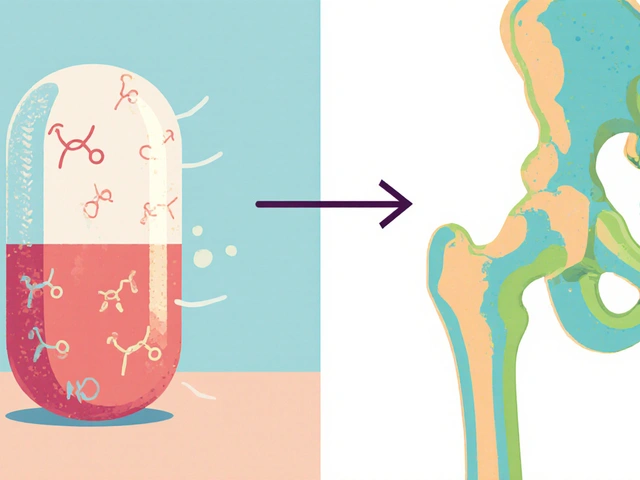
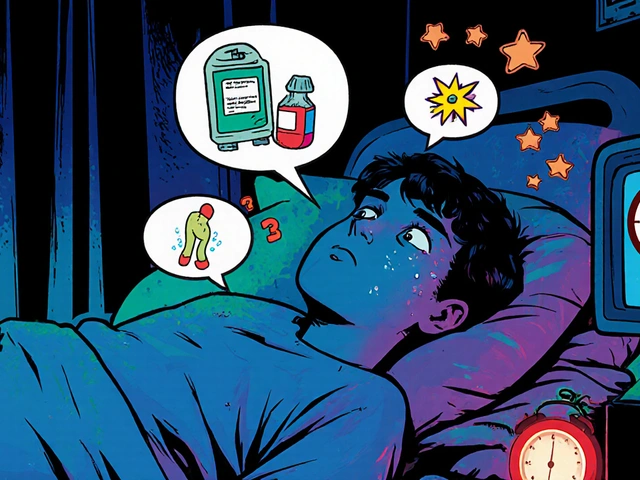
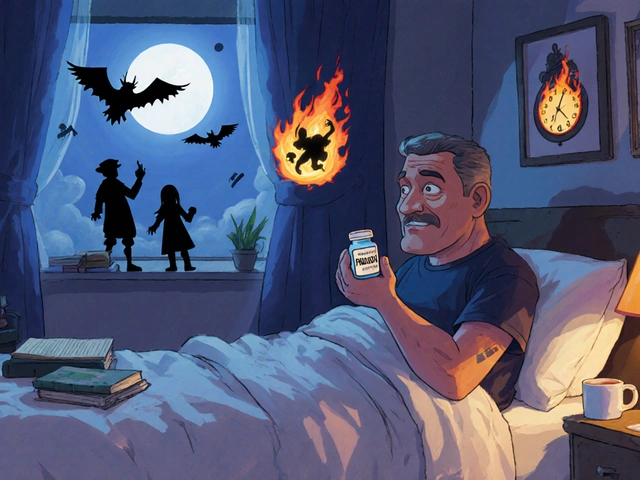
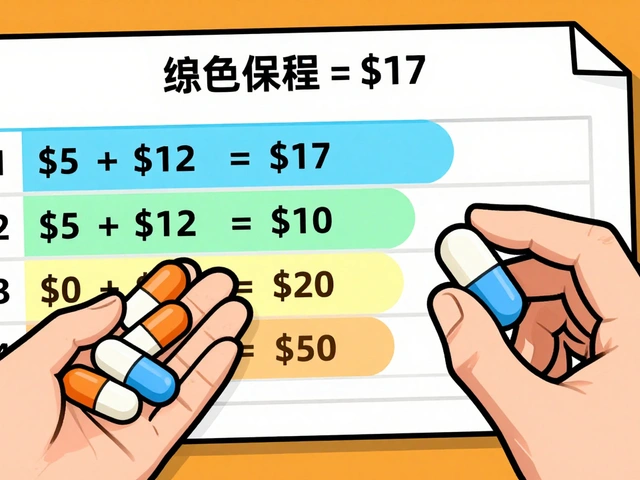
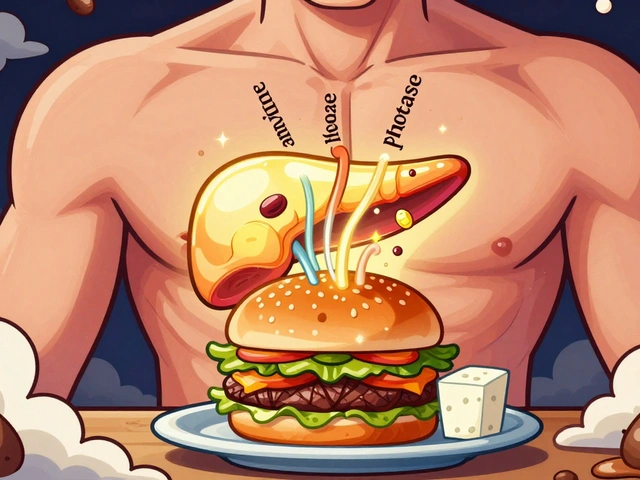
Edmond Abdou
September 5 2025
Hey folks, just wanted to say you’re not alone in this journey – there’s a whole community ready to back you up 😊. Start with a simple bladder diary; the patterns it reveals are pure gold for tweaking meds and habits. Keep the diary on your phone so you never have to dig through a paper stack. If dry mouth gets annoying, sugar‑free gum or a water bottle at your desk can be a game‑changer. And remember, it’s okay to ask your pharmacist for a generic version of tolterodine to save some cash. Small tweaks add up, so celebrate every extra minute you can hold off the bathroom. You’ve got this, and we’ve got your back! 🚀